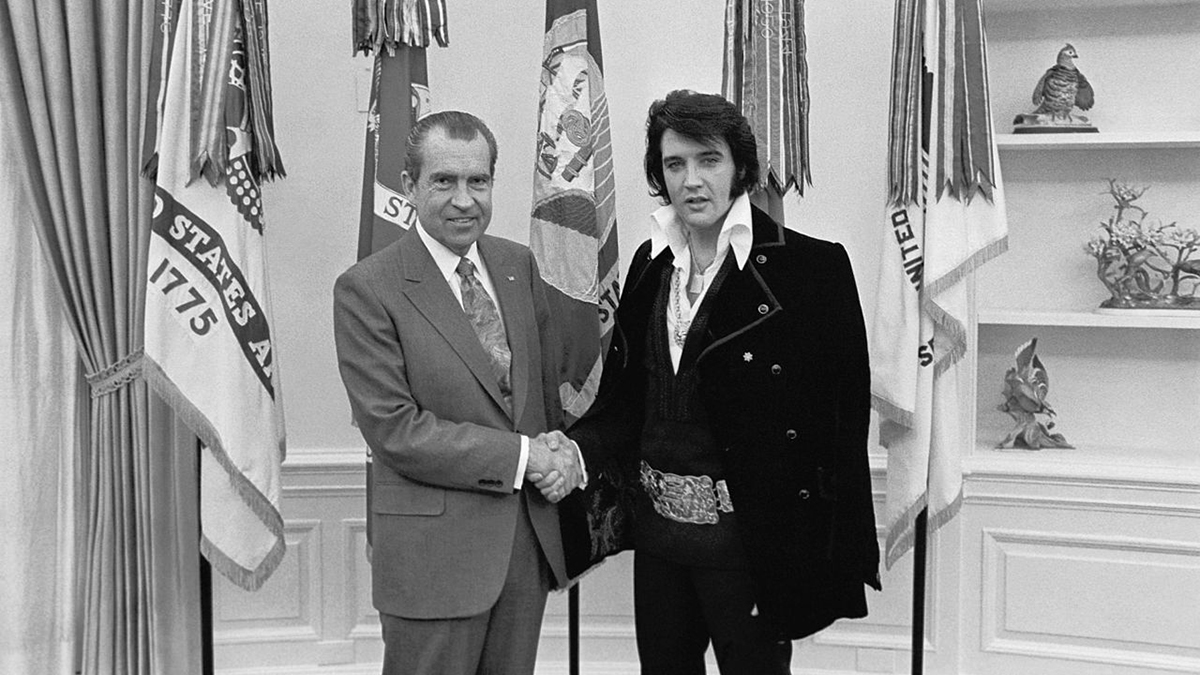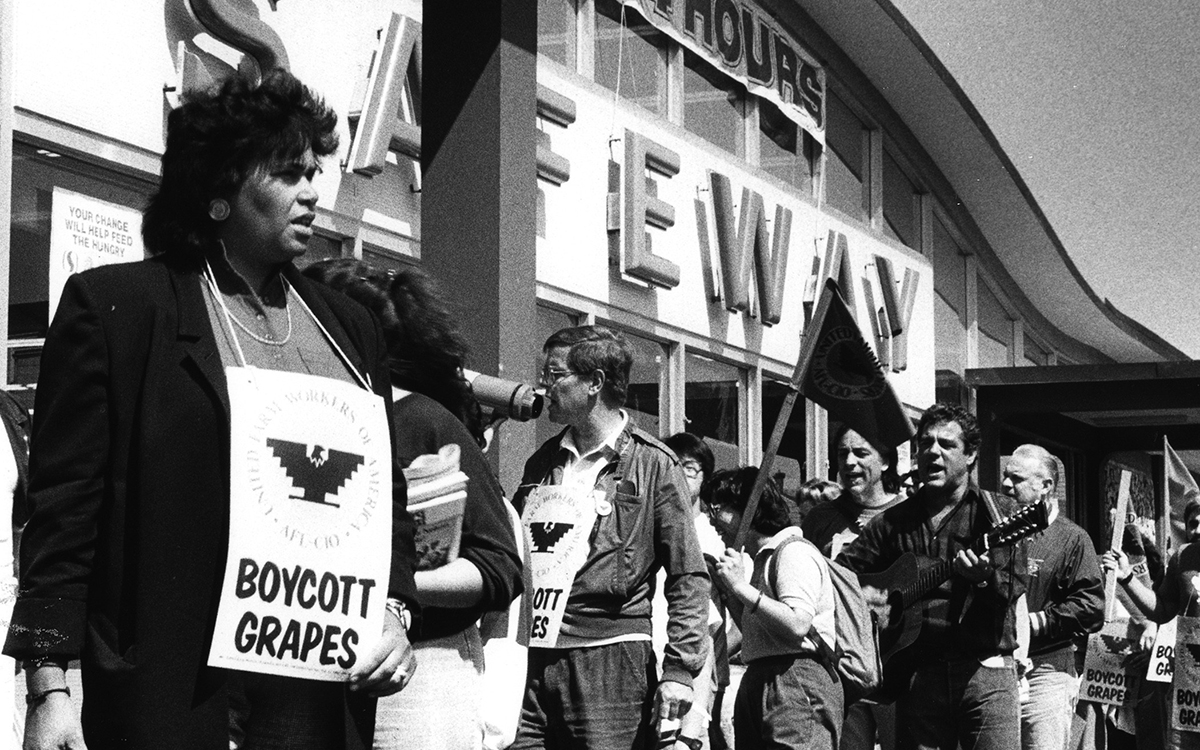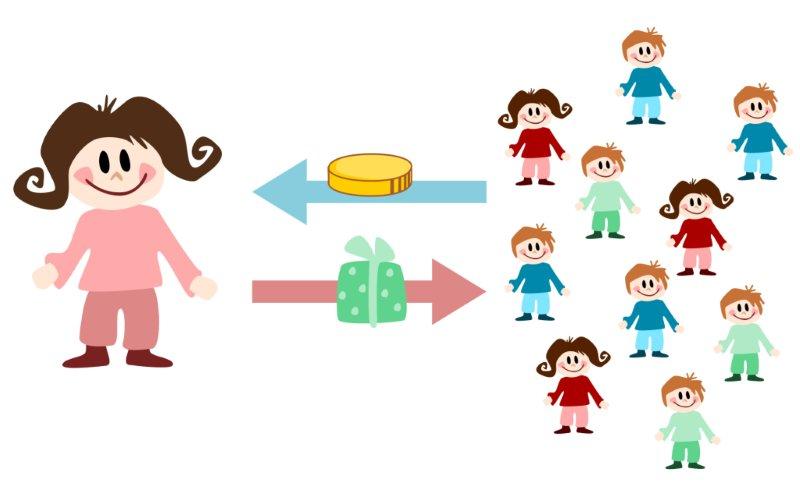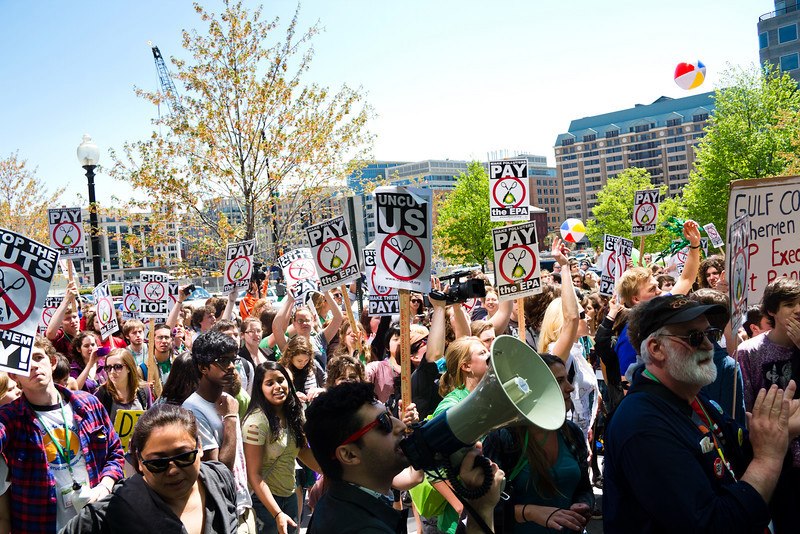
This is a strategic memorandum to all movement organizers, social justice organizations, and free citizens disgusted with a corporate state that has systematically extracted our wealth and resources for its own private gain, while giving back nothing in return. If we’re to preserve our collective resources and small amount of wealth we’ve managed to hold onto in light of this corporate onslaught, and if we’re to do it nonviolently, we’ll have to come together on a single strategy to win decisively.
This document contains the solutions needed to attain total victory against the corporate state, defeating it politically, financially, and emotionally. This document also contains the solutions needed for our movement to unite across issue focuses and eliminate the imaginary boundaries the corporate state has successfully forced between us, with the ultimate goal of making our public institutions accountable to us, and only us, in perpetuity.
Introduction
In the wake of the civil rights and feminist movements of the sixties, Lewis F. Powell authored his infamous memo to the U.S. Chamber of Commerce in 1971 that detailed his desired response to what he perceived as the left’s attack on “the free enterprise system.” Since the Powell Memo, America’s business community has been transformed into an all-consuming corporate state that has become too powerful to be governed by laws and democratic systems. The memo outlined a very detailed strategy for private business entities to use their wealth to increase their influence on academia, the media, and the courts, in order to maintain a sustained influence in government.
Powell’s delusions of business being “under attack” by people exercising their constitutional rights to win legislative victories was sadly taken without a grain of salt, and the U.S. Chamber of Commerce has since become the chief lobbyist of multinational corporations in Washington over the last 44 years, spending almost $900 million in the last decade alone to influence legislative incomes in Congress on behalf of big business. As a result of the Chamber’s unparalleled presence in the U.S. House and Senate, it has become commonly understood that members of Congress legislate with the profits of big business as their chief concern, rather than the welfare of the constituents they were elected to serve.
The disproportionate amount of power the corporate state holds in America and the world is obviously unsustainable if we the people are to maintain our economic dignity, and if our planet is to be able to provide resources to our grandchildren’s great-grandchildren in the future. Here’s how we do it.
The Few Global Businesses That Make Up the Corporate State
At its core, the corporate state is a tight-knit group of global businesses dependent on our money for its continued reign. And out of all of these businesses, we only need to concentrate on a few consumer-driven businesses that have an undue amount of influence in global society. Ten corporations – Kraft, Coca-Cola, Nestle, Mars, Unilever, PepsiCo, General Mills, P&G, Johnson & Johnson, and Kellogg’s – own most of the brands in traditional grocery stores. The biggest 10 banks – Bank of America, Wells Fargo, Citigroup, JPMorgan Chase, State Street Corp, PNC Bank, HSBC, US Bank, Bank of New York Mellon, and Capital One – hold $10 trillion in combined assets. Similarly, six global media giants – GE/Comcast, Viacom, NewsCorp, CBS, TimeWarner, and Disney – control 90 percent of the print media, radio, and television stations in America. We don’t need to aspire to lofty goals with finish lines perpetually in the distant future to win back our wealth and our planet. We only need to target these select few businesses for the desired effect to take place.
If we can get enough people organized to deprive these businesses, banks, and media empires of our purchasing power, labor, and consumption for a sustained period of time, the corporate state will naturally be forced to cut back on its multimillion-dollar lobbying contracts and campaign donations to focus on day-to-day operations. This will gradually reduce private business’ influence on government to the point where government will be more conditioned to listen to constituents again, and business will be more focused on selling their products and services rather than controlling every facet of government. It took 44 years for this cabal of businesses, banks, and media conglomerates to obtain a disproportionate amount of power in society since the drafting of the Powell Memo, but we can organize to take this power back from the corporate state in just half the time.

The Power of a Total Boycott
To win World War II, FDR declared a policy of “Total War,” in which there was full employment for all Americans remaining stateside, and where all industries, regardless of their product, were required to focus exclusively on making products to benefit the war effort. A total boycott is similar to total war in that the boycott is all-inclusive and sustained over a long period of time with a particular end goal in mind. Because the corporate state requires our money, labor, and consumption as its lifeblood for survival, the most effective way to deprive a corporation of its lifeblood is through a total boycott – not just promising to not buy its goods, but also vowing to not provide these corporations with our labor, or consume their products. If the people want to cease living under the thumb of a corporate state, it’s as easy as buying our goods elsewhere, finding ways to meet our needs in an occupation that doesn’t involve making them more profitable, banking locally, and reading independent media that publishes narratives challenging the corporate state’s dominance.
Our goal as a movement is clear: In every community in every state, we must work to a) promote awareness of local alternatives for citizens to shop for essential needs like food, clothes, banking solutions, and information sources, and b) create these alternatives where they don’t already exist. While capitalism is still a flawed system and a more equitable means of resource distribution is needed, this strategy isn’t meant to be a replacement of the capitalist system. Rather, this strategy is meant to make our government institutions beholden to the people rather than exclusively to the capitalists.
Due to the diverse nature of movement organizations’ goals and their means to achieving them, it is more sustainable and strategically sound to align our ranks toward radically transforming the existing system rather than devoting an unlimited amount of time and resources to achieving something that is still unknown. The answer to what comes next after capitalism will more than likely emerge not from one document, but as a result of our greater efforts to unify our movements around a total boycott effort of a select few global businesses, banks, and media conglomerates.
What a Successful Total Boycott Looks Like
If a total boycott is to be successful and sustained, it must be done while simultaneously promoting alternatives and disrupting corporate business from the streets and within the boardrooms. The corporate state must feel the pressure from organized resistance not in just their balance sheets, but in their own hearts and minds. Victory over the corporate state must not only be financial, but emotional.
We must first focus on electing our own organizers and leaders to posts at the city comptroller and state treasurer level. These two elected offices have a unique position managing the investments of pension funds of city and state workers, and often make up a large portion of attendees at annual shareholder meetings. These new city comptrollers and state treasurers can take a page from the already successful fossil fuel divestment movement, and threaten to divest pensions from the corporations targeted by the total boycott unless the boards of these corporations agree unanimously to demands presented by the movement.
These demands could include an immediate end to all campaign donations, lobbying contracts, forced relocation of indigenous populations, extraction of finite natural resources, fraudulent foreclosures, and the like. In the event that corporate boards don’t agree to these demands, the city comptrollers and state treasurers will then divest the collective investments of public employees into more sustainable companies that are more likely to agree to these demands. Over time, this effort will result in a simultaneous drop in share prices for the corporations targeted by the total boycott, boost the share prices of more sustainable businesses, and spread greater awareness of what the movement is capable of and committed to.
In the meantime, movement organizers at the local and community level should organize worker-owned cooperatives, focusing on providing mutual aid to meet essential needs not currently provided by the corporate state like food, shelter, housing, and energy. Community gardens in “food desert” neighborhoods like Greensgrow in Philadelphia can provide nutrition where there was none previously, and jobs by selling locally-grown food at farmer’s markets. Local efforts to fight homelessness, like Salt Lake City’s project to provide apartments to the city’s homeless population and Occupy Madison’s Tiny Homes initiative in Madison, Wisconsin can provide both jobs and housing. At the local electoral level, gains can be made by learning from Richmond, California’s successful movement to take back the local mayor’s office and city council from Chevron. Organizers there are funding a solar energy co-op whose first client is the city of Richmond. Such initiatives both take power from the corporate state while providing jobs and energy to the local population.
How a Total Boycott Can Cripple the Big Banks
To best target the 10 biggest banks in a total boycott, one tactic should be the mass effort to drive more Americans to move their money from accounts at these banks and create new accounts at local credit unions. Monthly efforts like a “New Year, New Bank” effort on January 1, a “Break Up with the Big Banks” campaign on February 14, a “Beware the Ides” event on March 15, a “Smoke Out the Big Banks” on April 20, a "Barbecue the Banks" event leading up to Memorial Day weekend, and other creative initiatives can become trends on social media to educate the American people about the fraudulent practices and destructive greed of the big banks, and about the ease of moving accounts to a local credit union. Community organizations organizing in neighborhoods should form and develop relationships with account specialists at local credit unions, to coordinate more effectively.
One of the big banks’ most sought-after targets are incoming college freshmen, who are often suckered into predatory loans which will take decades to pay off. This student debt scheme provides the banking cartels with not just over a trillion dollars in debt, but power over an entire generation through debt and fear of everything associated with debt struggles, like being unable to qualify for a car loan or an apartment. If the biggest banks were deprived of this constituency, their financial loss would be enormous.
Our movement can be highly-effective by coordinating massive demonstrations at campuses nationwide throughout freshman orientation weekends in late August and September. These demonstrations should be nonviolent, but militant. Blockades should be formed to prevent representatives of big banks from setting up tables at student centers. Informational pamphlets and loan documents from these big banks should be stolen and burned publicly. Participants in these demonstrations willing to risk arrest should forcefully block entrances to their facilities by forming human chains. Videos and photos of these demonstrations should be spread throughout movement-oriented social media accounts through a coordinated push. Over time, these banks will be seen as criminal, untrustworthy, toxic institutions by both current and incoming students and will be pariahs on campuses.
The movement should also learn from the Strike Debt project by coordinating debt withholding campaigns with college students and graduates. Over time, student debt that goes unpaid long enough becomes categorized as “distressed debt,” which can be bought from the banks for pennies on the dollar by debt collectors, who make a profit by collecting the full amount. Debtors can then refuse calls from debt collectors while organizing projects similar to the Rolling Jubilee, in which the movement crowdfunds mass purchases of distressed student debt. Movement organizations can form legal entities tasked with becoming debt collectors, buy up this distressed debt, and abolish it rather than collect it.
The movement should also partner with movement-affiliated attorneys sympathetic to the cause, and connect them to graduates who owe unsustainable amounts of debt. These attorneys can then draft letters to the financial institutions that own the debt on behalf of these students, and force them to prove that the student does indeed have the debt that the banks claim they’re owed. By overwhelming the banks with official requests from lawyers to dig through an endless array of paperwork, much of this debt will likely be forgiven or abolished so that the banks can avoid additional legal costs of having to go to court.
One particular long-term effort the movement should invest in is enlisting the sympathy of employees of the financial services industry. Finding these workers should be a coordinated effort, and winning them over will require multiple one-on-one, face-to-face conversations appealing to their human decency, along with sharing articles about the student debt crisis with them on social media. It's important to toe the fine line between shaming them into quitting their jobs, which we don't want, and enlisting them as participants in the movement through their jobs.
By winning the hearts and minds of the button-pushers at these institutions, it can be possible to convince them to become conscientious objectors to participating in the subjection of millions of young people to decades of debt enslavement. If these individuals are fired from their jobs, social media accounts affiliated with the movement should coordinate campaigns to elevate the actions of these individuals and make them heroes and martyrs, which will likely bolster their images and lessen their punishments, while also pressuring others inside these institutions to take after their example.
Electorally, our movement can deprive the big banks of a major money source by simply running successful campaigns for county sheriff, county judge, and county coroner. Banks that evict foreclosed homeowners depend on county sheriffs to carry out their duties for them. In certain jurisdictions, a sheriff who refuses a bank’s order to evict a homeowner can be arrested by the county coroner. If the sheriff refuses to evict the foreclosed family and the coroner refuses to arrest the sheriff, the county judge can then hold the sheriff and coroner in contempt of court and order them to be detained until they carry out their duties. However, in the event that the sheriff, coroner, and judge of a particular county are all affiliated with the movement and refuse out of conscientious objection, then there is nobody left in the legal system to carry out the banks’ eviction orders. While the bank's eviction orders would likely be carried out eventually as a result of a lengthy appeal process, it would nonetheless serve as a unique viral story that captures public attention, educates the community, and further turns public sentiment against the banks.
By electing movement leaders to specific offices, as well as convincing rank-and-file employees of the financial services industry to rebel against their superiors, the banks will feel as if they have no allies within the government or even within their own companies. As such, they will lose tremendous amounts of income from their inability to make good on foreclosure threats. Combine these efforts with coordinated divestment campaigns, and the banks’ hubris will be broken by the tremendous psychological damage inflicted throughout the entire process.
Crowdfunding a Total Boycott Movement
These initiatives can be successfully crowd-funded, but only by effective use of social media. 133 million Americans currently use Facebook, and there is already an existing network of movement-oriented Facebook pages that have a collective reach of easily 100 million worldwide. If these pages and more like them were to work together to coordinate on crowdfunding important initiatives like the ones listed above, the necessary capital could be obtained quickly without having to depend on the corporate state and the oligarchic foundations associated with it.
Similarly, major Twitter accounts associated with movement organizations and dynamic movement leaders can coordinate to make hashtags associated with these efforts become national trending topics, driving news coverage and national awareness without having to depend on the corporate state’s media organizations. While the total boycott would include refusing to watch, listen to, or read the sites of the corporate state’s news empires, news could continue to spread effectively through a coordinated, masterful use of existing social media platforms. Rather than having to organize all 133 million Americans on Facebook, or all 49 million Americans on Twitter, the same impact can result from organizing a small handful of people who run the most influential accounts on those mediums to coordinate around specific initiatives.
It's likely that the people behind these influential social media accounts will have social connections with influential and sympathetic donors who have access to additional capital. For these crowdfunding efforts to work, the voices of these accounts must be willing to introduce these potential financial allies of the movement to other well-connected social media accounts, and create a community of trust in which goals are mutual rather than exclusive, tasks are shared rather than delegated, and favors and services are paid forward rather than owed.
How to Unite Our Movement to be Truly Effective
One of the biggest obstacles within our movement is our lack of unity. The only reason the corporate state has amassed so much power is because it has successfully sowed enough distrust within sectors of the movement. This lack of solidarity is usually catalyzed by making the pool of potential funding so small that movements feel they must compete nonstop with one another for crumbs. This has unfortunately led to some social justice activists and organizations to become professional fraudsters, sustaining themselves by taking credit for work done by lesser-known individuals and groups and using their email lists to fundraise off of wins they had no part organizing. To overcome this, these fraudulent activists and organizations have to first acknowledge the harm they have done and work to make reconciliations. This process will be long and painful, but necessary.
Next, our movement organizations must learn to organize not just our core constituencies, but each other. Advocacy groups that specialize in legislative lobbying efforts must focus exclusively on lobbying, and not claim to also specialize in grassroots organizing. Likewise, groups that specialize in grassroots organizing should focus entirely on that task, rather than issuing policy papers and research. Organizers whose expertise is research and analysis should refrain from delving into media and communications. Once we all learn what our talents and skills are, we can work to lift each other up through our work rather than try to stifle our competition by attempting to do their work better than them.
Policy wonks should research and analyze data to write informative reports. Communications specialists should get these facts spread throughout the media sphere. Grassroots organizers should use the research and media work to inspire action within their communities. And legislative lobbying groups should build off the community’s energy to push for specific policies in the halls of government. The efficacy of our work can increase dramatically by seeing our fellow organizations as teammates, rather than competitors.
Aside from class issues, our movement must overcome the racial boundaries that we have been conditioned to ignore. White liberals need to learn to check their own racism and privilege, and black organizations should work to make white allies feel more connected, rather than isolating them. While white privilege is real and can be used to hurt or disenfranchise others, it should instead be used to lift others up. While white allies shouldn’t be at the front of marches protesting police killings of black youth, they should certainly be present and engaged. And these white allies should make it a point to stand up for their black comrades and not be silent whenever they see a white person exercise their privilege in a negative way to disenfranchise a person of color.
Likewise, black organizations that criticize white allies for not coming to regular meetings or activities should instead reach out purposefully and make white allies feel welcome by learning their name, inviting them to coffee, and calling them in advance of meetings or demonstrations to ask them to participate. When this dialogue takes place, it should happen in a clearly-defined safe space where it’s okay for privileged activists to ask questions without having to be shouted down or ostracized to the point of shutting down and becoming that much more afraid of confronting racial tension. As activists, we should enter these situations knowing that the conversations will make us squirm, but welcome that feeling as a sign that we’re growing our solidarity by venturing out of our comfort zones.
Lastly, our organizations must be willing to go on record to be against single-issue politics. While organizations are almost always made up of individuals with a shared interest and expertise in single issues like education, healthcare, immigration, the environment and the like, we must evolve past focusing our work exclusively within our issue silo. Education activists should also care about immigration. Immigration activists should also care about the environment. Healthcare activists should also care about economic justice. Environmental activists should also care about education.
To make our intersectional thinking publicly known to the world, movement organizations should sign onto a letter proclaiming that single issue politics is dead, that we are all invested in the well-being and success of each other, that we reject the false barriers of class and race that have been strategically put in place to keep us competing against one another until now, and that we are united in our goal of overthrowing the corporate state. Once this statement of unity has been made public, any activist, no matter the issue they’re most passionate about, is immediately connected to everyone else and is united in the fight against a common enemy.
Conclusion
If the strategies and tactics within this document are implemented successfully, our movement will be more united, driven, connected, funded, and determined than ever before. The corporate state will be broken in both finances and spirit, forcing its backers to retreat from the halls of our government back to their boardrooms. Rather than focusing our energy on achieving abstract, poorly-defined goals like “getting money out of politics,” and “ending corruption,” we now have specific antagonists who will be targeted by the combined force of a unified movement for the specific goal of undoing their decades of insidious influence-peddling. Hopefully, with the publication of this document, none of our detractors can say our protests and demonstrations lack a grand strategy.
3 WAYS TO SHOW YOUR SUPPORT
- Log in to post comments






















